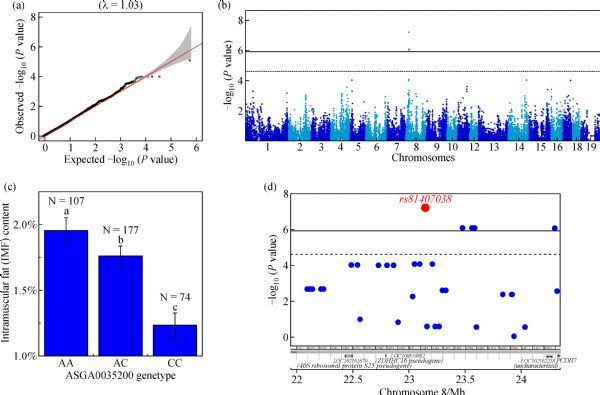| 20 |
Burton P R, Clayton D G, Cardon L R, Craddock N, Deloukas P, Duncanson A, Kwiatkowski D P, McCarthy M I, Ouwehand W H, Samani N J, Todd J A, Donnelly P, Barrett J C, Burton P R, Davison D, Donnelly P, Easton D, Evans D, Leung H T, Marchini J L, Morris A P, Spencer C C A, Tobin M D, Cardon L R, Clayton D G, Attwood A P, Boorman J P, Cant B, Everson U, Hussey J M, Jolley J D, Knight A S, Koch K, Meech E, Nutland S, Prowse C V, Stevens H E, Taylor N C, Walters G R, Walker N M, Watkins N A, Winzer T, Todd J A, Ouwehand W H, Jones R W, McArdle W L, Ring S M, Strachan D P, Pembrey M, Breen G, St Clair D, Caesar S, Gordon-Smith K, Jones L, Fraser C, Green E K, Grozeva D, Hamshere M L, Holmans P A, Jones I R, Kirov G, Moskvina V, Nikolov I, O’Donovan M C, Owen M J, Craddock N, Collier D A, Elkin A, Farmer A, Williamson R, McGuffin P, Young A H, Ferrier I N, Ball S G, Balmforth A J, Barrett J H, Bishop D T, Iles M M, Maqbool A, Yuldasheva N, Hall A S, Braund P S, Burton P R, Dixon R J, Mangino M, Stevens S, Tobin M D, Thompson J R, Samani N J, Bredin F, Tremelling M, Parkes M, Drummond H, Lees C W, Nimmo E R, Satsangi J, Fisher S A, Forbes A, Lewis C M, Onnie C M, Prescott N J, Sanderson J, Mathew C G, Barbour J, Mohiuddin M K, Todhunter C E, Mansfield J C, Ahmad T, Cummings F R, Jewell D P, Webster J, Brown M J, Clayton D G, Lathrop G M, Connell J, Dominiczak A, Samani N J, Marcano C A B, Burke B, Dobson R, Gungadoo J, Lee K L, Munroe P B, Newhouse S J, Onipinla A, Wallace C, Xue M, Caulfield M, Farrall M, Barton A, and Genomics (BRAGGS) T B R A G, Bruce I N, Donovan H, Eyre S, Gilbert P D, Hider S L, Hinks A M, John S L, Potter C, Silman A J, Symmons D P M, Thomson W, Worthington J, Clayton D G, Dunger D B, Nutland S, Stevens H E, Walker N M, Widmer B, Todd J A, Frayling T M, Freathy R M, Lango H, Perry J R B, Shields B M, Weedon M N, Hattersley A T, Hitman G A, Walker M, Elliott K S, Groves C J, Lindgren C M, Rayner N W, Timpson N J, Zeggini E, McCarthy M I, Newport M, Sirugo G, Lyons E, Vannberg F, Hill A V S, Bradbury L A, Farrar C, Pointon J J, Wordsworth P, Brown M A, Franklyn J A, Heward J M, Simmonds M J, Gough S C L, Seal S, Susceptibility Collaboration (UK) B C, Stratton M R, Rahman N, Ban M, Goris A, Sawcer S J, Compston A, Conway D, Jallow M, Newport M, Sirugo G, Rockett K A, Kwiatkowski D P, Bumpstead S J, Chaney A, Downes K, Ghori M J R, Gwilliam R, Hunt S E, Inouye M, Keniry A, King E, McGinnis R, Potter S, Ravindrarajah R, Whittaker P, Widden C, Withers D, Deloukas P, Leung H T, Nutland S, Stevens H E, Walker N M, Todd J A, Easton D, Clayton D G, Burton P R, Tobin M D, Barrett J C, Evans D, Morris A P, Cardon L R, Cardin N J, Davison D, Ferreira T, Pereira-Gale J, Hallgrimsdóttir I B, Howie B N, Marchini J L, Spencer C C A, Su Z, Teo Y Y, Vukcevic D, Donnelly P, Bentley D, Brown M A, Cardon L R, Caulfield M, Clayton D G, Compston A, Craddock N, Deloukas P, Donnelly P, Farrall M, Gough S C L, Hall A S, Hattersley A T, Hill A V S, Kwiatkowski D P, Mathew C G, McCarthy M I, Ouwehand W H, Parkes M, Pembrey M, Rahman N, Samani N J, Stratton M R, Todd J A, Worthington J. Genome-wide association study of 14,000 cases of seven common diseases and 3,000 shared controls. Nature, 2007, 447(7145): 661–678
DOI
PMID
|




